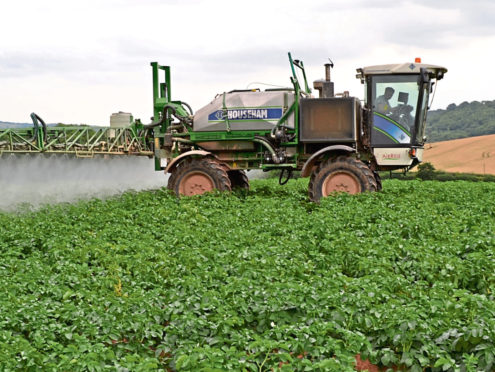Dutch potato producers have been accused of putting the efficacy of the industry’s limited number of fungicides at risk through “irresponsible” practices.
Growers attending the SAC Association of Potato Producers conference at Scone heard independent agronomist Denis Buckley describe what he said was the Dutch approach to fungicide application as “insane and irresponsible”, even as the industry “hangs on for dear life” to the crop protection products at its disposal.
“They use fungicides intensively in isolation and the result is they’re pushing the blight fungus towards either resistance or reduced sensitivity to those fungicides,” he said.
“They’re not using mixtures, but blocks of single active products or ingredients.”
Mr Buckley warned the loss of key fungicide groups meant late blight remains the biggest single threat to global potato production, and predicted the attitude of industry regulators would only change in the event of a global food shortage.
“Food is abundant throughout the Western world and that means the current pesticide regulatory regime is going to remain brutal,” he said.
“I don’t see any way around that. But if food became scarce then all of a sudden production would be key to survival, and governments will do anything to increase production.
“If we get stuck by blight in potatoes or downy mildew in onions and there’s widespread crop failure, we’ll get a sudden change of attitude, and within the legislation there’s provision to grant emergency approvals for chemicals that haven’t gone through the full regulatory process.”
The veteran agronomist held out little hope of genetics solving the late blight threat, and said despite new varieties being bred, they would not provide a complete solution.
He added: “It takes 10 years to find out the Achilles heels of new varieties, and we wouldn’t want to start with a clean sheet of paper with a farm full of new varieties. We could do with genetic modification of our existing varieties because we already know how to grow them.”
He held out hope that new Crispr gene editing technology, which involves modifying rather than inserting genes, would prove to be more politically acceptable than genetic modification.
He said: “If we get that we’re in with a fighting chance – until the blight fungus overcomes those resistant genes. It is so clever the chances of it overcoming a resistant gene is high. Up till now we had fungicides, they’re what has kept the potato crop going.
“Mother nature generally has the last word.”
Mr Buckley predicted growing costs would continue to rise, the carbon footprint of farm produce would deteriorate, and the risk to individual farm businesses would grow because the loss of active ingredients increased the chance of crops going wrong.
nnicolson@thecourier.co.uk










